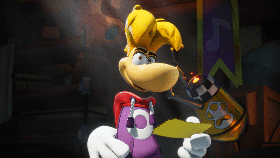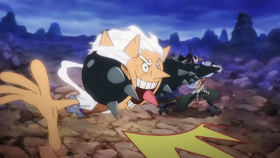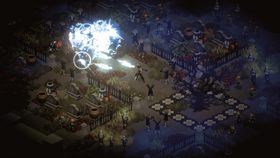The sheer influence of Steven Spielberg and George Lucas’s Indiana Jones franchise is insurmountable. Even if one did not experience the initial trilogy from the 1980s, the franchise lived on vicariously through other means.
Whether it is the misaligned fourth entry, Kingdom of the Crystal Skull or through the Lego Indiana Jones game, newer fans had plenty of chances to experience Dr Henry Jones’ globetrotting adventure.
Even the National Treasure film franchise and the Uncharted video games owe a lot to Indiana Jones, with each franchise providing its own unique twist to the Indiana Jones formula that is era-appropriate to when they were released.

That said, all good things must come to an end. After all, the revered archaeologist has seen it all throughout his adventure-filled life. Thankfully, fans can expect a fitting end to the franchise with Indiana Jones and the Dial of Destiny.
Spoilers ahead for Indiana Jones and the Dial of Destiny.
Revenge of the Ancients

Fans may be hesitant upon hearing that this latest film stars an 80-year-old Harrison Ford in the role of the whip-cracking Indiana Jones, but for the most part, director James Mangold and his team managed to pull it off.
It’s worth mentioning that Mangold also directed Logan, another major send-off for one of cinema’s most revered superheroes, Wolverine. And while the Dial of Destiny does not hit the same major emotional beats as Logan, it does stay true to its pulp action roots.

As the name implies, the Dial of Destiny features the titular MacGuffin to be Archimedes’ Dial, which history buffs may recognise as one of history’s earliest computing devices. Of course, being an Indiana Jones film, it does a lot more than just crunch numbers.
Set in 1969 just after the moon landing, Indiana Jones’ retirement life is turned upside down by his goddaughter Helena Shaw and the return of a Nazi scientist from a previous adventure. This leads Jones and Shaw on a trip to Greece.
Instruments of Chaos

Indiana Jones himself is grizzled and worn out, haunted by the death of his son Mutt from the fourth film, which led to the estrangement of his wife Marion. This is the most defeated stage in Indiana Jones’s life, which really sets this final adventure as a way for Indy to reclaim some of his lost glory.
Phoebe Waller-Bridge’s Helena Shaw is a lot more rambunctious, sporting some of Indiana Jones’ younger edge from Temple of Doom. As much as she plays the part of a cat burglar of sorts, Indy’s influence on her archaeological interests is what saves the day in the end.

Mads Mikkelsen’s role as the villainous Jürgen Voller is also a reflection of the modern day, with this Nazi revivalist seeking to reshape history using the Dial’s time-travelling functionalities. It harkens back to the villains in Raiders of the Lost Ark, which also comes with a similar frightful fate for the villains.
Yes, the Dial of Destiny is a time-travelling device that is similar to the time-turner in Harry Potter and the Prisoner of Azkaban. As much as it allows for time travel, the effects are already set in stone in a way, throwing out any Back to the Future-style shenanigans.
The Infernal Machine

Beyond the somewhat new elements, Indiana Jones feels like a modern take on the classic trilogy, with less of the theme park-style action set pieces that the fourth film had. While not directed by Steven Spielberg, his influence is also apparent in the film’s set design.
Longtime fans will be pleased with this final hurrah for the world’s most beloved archaeologist, but casual fans may not be as impressed with the Dial of Destiny. The film’s climax is a genuine surprise, a twist that can make or break one’s opinion of it.

The biggest missed opportunity is the film not including Ke Huy Quan’s Shortround in any shape or form. John Rhys-Davies or Antonio Banderas’s short role could have gone to Shortround, which would have been a great return for the character into the franchise.
All in all, in a world of massive film universes and infinite content, there’s something remarkable about Indiana Jones and the Dial of Destiny’s definitive ending. Hopefully, it stays that way, and we won’t get anything to tarnish Indy’s legacy from here on out.





